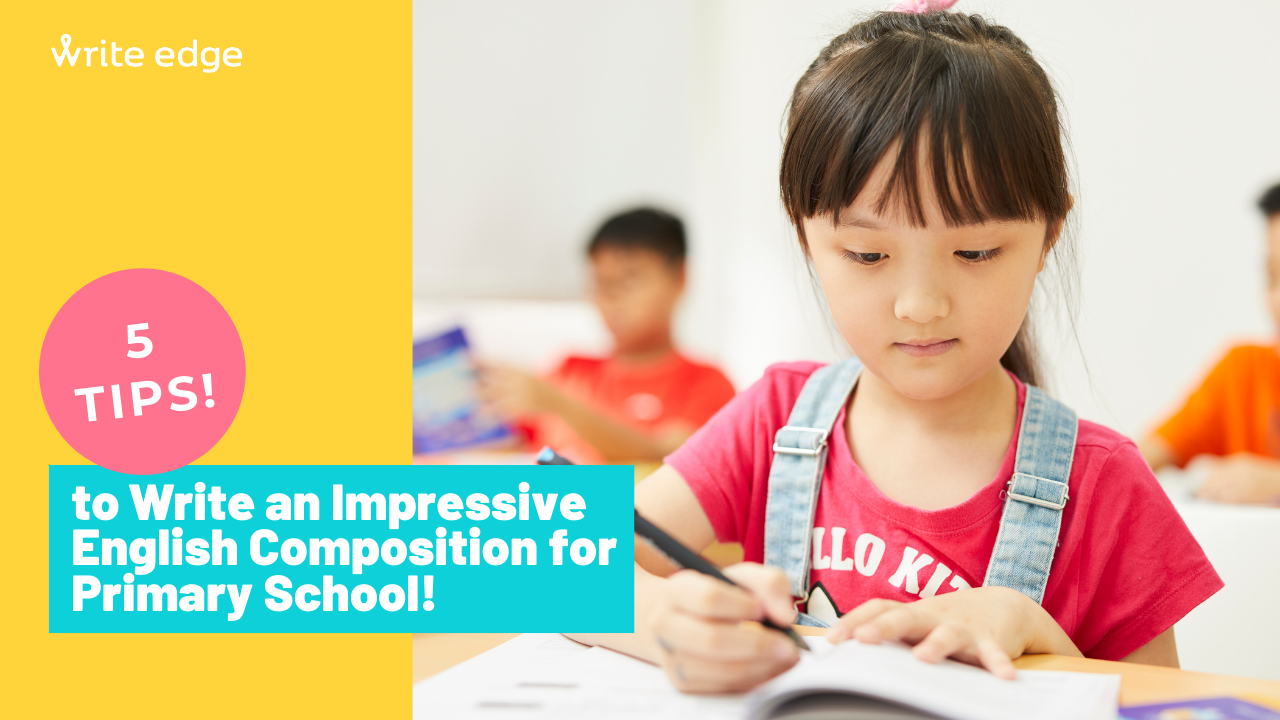Improving your English composition may seem like a daunting or even impossible task. Unsure where or how to even begin? It is not as tough as you might think! Here are some quick tips on how to put together a jaw-dropping, awe-inspiring composition.
5 Tips to Enhance Your Primary School English Composition:
- A Well-Structured, Well-Developed plot
This is the first, perhaps most important thing when writing your composition. The plot of your story needs to have a logical flow so that your reader can follow along easily and be fully immersed in it. A basic plot of a composition would look like this:
Introduction Rising Action Climax Falling Action Conclusion
However, anyone can follow a simple plot outline. Here are two techniques you can apply to bring your composition from ‘ordinary’ to ‘impressive’:
Foreshadowing: Hint to the reader about a twist later in the story through a character’s thoughts, weather, or even stating that something is going to happen. E.g. ‘Dark storm clouds hung overhead like an omen.’ // ‘Little did she know that this was about to be an unforgettable day…’
Creating Suspense: Adding tension keeps your reader hooked onto your story and introducing problems that the character has to face in the Rising Action is the most common method. Aside from this, you can also create a sense of urgency by introducing a time constraint (e.g. having to escape the forest by sundown) or create mystery by not revealing everything at once (e.g. write the character’s reaction/thoughts before disclosing what happened).
- Strong Characters/Characterisation
Characters are the next most crucial part of any narrative or descriptive composition. After all, they are the key to bringing your story to life. Your reader can best connect with your story if your characters are believable and relatable. Before you even start writing, think about your characters and assign character traits to them. Are they sassy and self-assured, or timid and soft-spoken?
Skills such as Show-Not-Tell (SNT) and using 5 Senses to describe your characters is especially vital in this regard. We want to avoid outright spelling out what qualities or emotions your character is trying to display. (E.g. ‘James was hot-tempered. He was getting very irritated.’) Instead, describing their actions/ behaviour (‘Do’), their appearance (‘Look’), or what they ‘Say’ helps to demonstrate them to the reader.
Will they jump straight into the fire to save a terrified, mewling kitten, or might they dawdle at the gates of a haunted house despite their friends’ coaxing? Depending on what you decide, the way they behave, speak, and think should reflect the character trait(s) you assigned to them.
- Using Impressive Phrases
Using more sophisticated expressions is another great way of avoiding bland descriptions of an incident and capturing your reader’s attention. These include figurative language you can use, such as:
Metaphors: Compares one thing to another without the use of ‘like’ or ‘as’ (which are similes). E.g. ‘Students swarmed to the canteen.’
Hyperboles: Exaggerates an idea to emphasise a point. E.g. ‘The mirror shattered into a million shards.’
Personification: Describe inanimate objects as having human qualities. E.g. ‘The flowers danced in the wind.’
Varying the structure of a sentence can also help your composition seem more impressive. By changing the way you begin a sentence, your writing can feel smoother and less monotonous for.
E.g. Jenny dashed to the kitchen. She gulped down a glass of water. Dashing to the kitchen, Jenny gulped down a glass of water.
- A Mature Conclusion
The conclusion of your story is just as, if not more important, than your introduction. It is here that you wrap up the narrative and ensure that you answer the question. In your conclusion, you can bring the story to a close in a mature way by sharing the thoughts or feelings of the character, and something that they had learned over the course of the story. For instance, in overcoming the hurdles he/she has faced, your character realised that he/she has grown to be more understanding or compassionate than when the story began.
You can also echo a thought or come back to the same setting as when you opened your story. This helps your story come full circle. It becomes easier for your reader to link your story to the beginning and compare how much your character has grown since then.
- Personal Experiences
The best stories are ones that are written with conviction. In other words, when you believe in what you write, your reader comes to believe it too. Drawing from your personal experience(s) is one of the easiest ways to do this. This is because you understand how your character may feel or react to certain situations, which enables you to write more convincingly.
When you immerse yourself into your own story, your reader will also (more likely) be able to do so to. It becomes easier to relate to your character’s emotions and dilemmas and enjoy the story for what it is – more than a piece of paper to be graded.
With enough practice, you can build your writing potential. Don’t forget that it takes time to hone your craft. The key is to keep learning and keep writing. You can do it!
To find out more about what is taught at Write Edge, click here.

